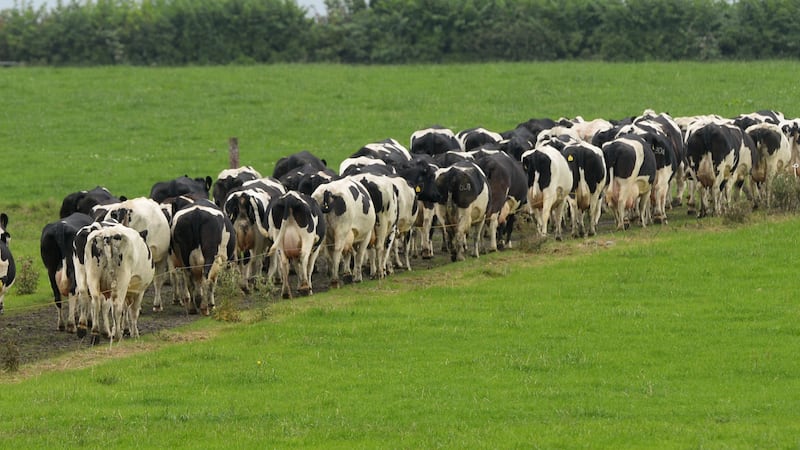US consumer prices rose slightly in December even as households paid more for healthcare, and monthly underlying inflation slowed, supporting the Federal Reserve’s desire to keep interest rates unchanged at least through this year.
The weak inflation report from the Labour Department on Tuesday came on the heels of data last week showing a moderation in job growth in December. Economists said these developments were flagging a sharp slowdown in domestic demand.
Though the economy appears to have maintained a steady pace of growth in the fourth quarter, it was likely supported by falling imports.
“This is giving rise to the fear that maybe economic demand is showing early signs of hitting a new soft patch for growth that will carry into the first quarter of 2020,” said Chris Rupkey, chief economist at MUFG in New York.
"The Federal Reserve is on the sidelines this year, but that could swiftly change if overall economic demand weakens and inflation shows little sign of returning to target."
The Labour Department said its consumer price index increased 0.2 per cent last month after climbing 0.3 per cent in November. The monthly increase in the CPI has been slowing since jumping 0.4 per cent in October.
In the 12 months through December, the CPI rose 2.3 per cent. That was the largest increase since October 2018 and followed a 2.1 per cent gain year-on-year in November.
The CPI accelerated 2.3 per cent in 2019, the largest rise since 2011, after increasing 1.9 per cent in 2018. Economists polled by Reuters had forecast the CPI would rise 0.3 per cent in December and advance 2.3 per cent on a year-on-year basis.
Excluding the volatile food and energy components, the CPI edged up 0.1 per cent after climbing 0.2 per cent in November. The so-called core CPI was up by an unrounded 0.1133 per cent last month compared to 0.2298 per cent in November.
Underlying inflation in December was held back by declines in the costs of used cars and trucks, airline tickets and household furnishing and operations, which offset increases in the prices of healthcare, apparel, new motor vehicles, recreation and motor vehicle insurance.
In the 12 months through December, the core CPI increased 2.3 per cent, the largest gain since October 2018, after rising 2.3 per cent in November. For all of 2019, the core CPI gained 2.3 per cent after increasing 2.2 per cent in 2018.
The dollar was little changed against a basket of currencies as investors awaited the signing on Wednesday of a preliminary trade deal between the United States and China, a first step toward diffusing an 18-month trade war. US Treasury prices rose. Stocks on Wall Street were mixed.
The Fed tracks the core personal consumption expenditures (PCE) price index for its 2 per cent inflation target. The core PCE price index rose 1.6 per cent on a year-on-year basis in November. It undershot its target in the first 11 months of 2019. PCE price data for December will be published later this month.
The US central bank last month left interest rates steady and signalled monetary policy could remain on hold this year after it reduced borrowing costs three times in 2019.
Minutes of the Fed’s December 10th-11th meeting published early this month showed policymakers generally expected inflation would eventually hit the central bank’s target as the economy continued to expand and resource utilisation remained high.
There were, however, concerns among some officials “that global or technology-related factors were exerting downward pressure on inflation that could be difficult to overcome”.
Moderate inflation was underscored by the employment report last Friday, showing the increase in annual wage growth retreating below 3.0 per cent in December, despite the unemployment rate holding at near a 50-year low of 3.5 per cent and a broader measure of labour market slack dropping to a record 6.7 per cent.
Weak inflation offered no boost to consumers’ purchasing power, with average weekly earnings slipping 0.1 per cent last month after edging up 0.1 per cent in November. This could hurt consumer spending, which is already slowing.
“It is hard for the average household to keep up the spending we have seen if their spending power is going nowhere,” said Joel Naroff, chief economist at Naroff Economic Advisors in Holland, Pennsylvania.
In December, gasoline prices advanced 2.8 per cent after rising 1.1 per cent in November. Food prices gained 0.2 per cent after edging up 0.1 per cent in November. Food consumed at home ticked up 0.1 per cent.
Owners’ equivalent rent of primary residence, which is what a homeowner would pay to rent or receive from renting a home, increased 0.2 per cent for a third straight month.
Healthcare costs jumped 0.6 per cent in December after rising 0.3 per cent in the prior month. They were boosted by a 2.1 per cent acceleration in prices for prescription medication. Consumers also paid more for hospital services and doctor visits.
Healthcare costs surged 4.6 per cent in 2019, the largest gain since 2007 and up compared to 2.0 per cent in 2018.
“It may be too early to conclude this, but it is beginning to look like the current laissez-faire approach to health care is allowing providers to ramp up prices,” said Naroff.
Apparel prices increased 0.4 per cent after nudging up 0.1 per cent in November. New vehicle prices rebounded 0.1 per cent after declining for five straight months. Prices for used motor vehicles and trucks dropped 0.8 per cent last month after increasing 0.6 per cent in November.
The cost of household furnishings and operations dropped 0.4 per cent in December, the largest decrease since December 2014. Airline fares fell 1.6 per cent, declining for a third straight month. – Reuters














